Meet RIBA, a robot nurse that resembles a friendly bear.
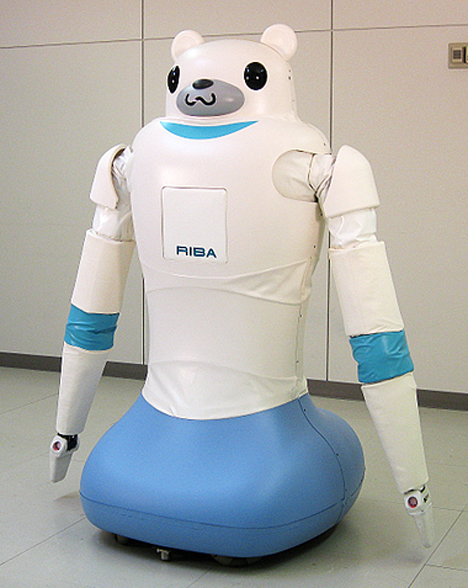
RIBA -- short for "Robot for Interactive Body Assistance" -- was developed by researchers at Japan's Institute of Physical and Chemical Research (RIKEN) and Tokai Rubber Industries, Ltd. (TRI). Designed primarily to assist nurses by lifting patients in and out of their beds and wheelchairs (as well as on and off the toilet), the 180-kilogram (400-lb) robot can safely pick up and carry people weighing as much as 61 kilograms (135 lbs).
+ Video
The cheery-looking machine has long, multi-jointed arms embedded with an array of tactile sensors that help it optimize the lifting and carrying of humans. For safety purposes, RIBA's entire body is covered in a soft skin molded from an advanced lightweight urethane foam developed by TRI. The soft skin is designed to ensure the comfort of patients while they are being carried. In addition, the arm joints yield slightly under pressure -- much like human arms do -- further increasing the level of comfort and safety.
The robotic bear can also recognize faces and voices, as well as respond to spoken commands. Using visual and audio data from its surroundings, RIBA can identify co-workers, determine the position of those nearby, and respond flexibly to changes in the immediate environment. The motors operate silently, and a set of omni-directional wheels allow the robot to navigate tight spaces inside hospitals and nursing facilities.
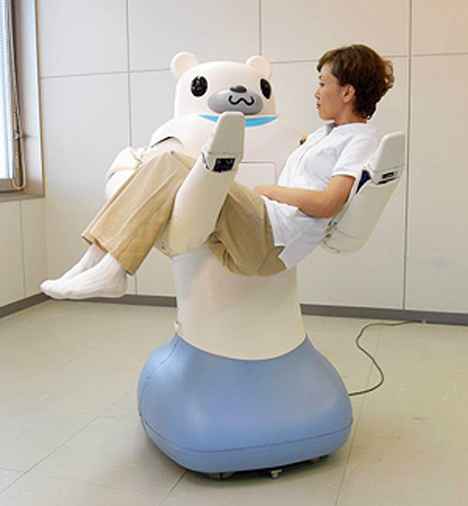
Japan, which faces an impending shortage of nurses as the population grows older, is looking at ways to offset the inevitable challenges that medical institutions will encounter in the coming years. Technology is regarded by some as the solution to this problem, and a considerable amount of government and private research is being devoted to developing robots capable of working in the healthcare field.
RIBA is an upgraded version of RIKEN's RI-MAN, a robot nurse assistant developed in 2006 that was only able to lift dolls weighing 18.5 kilograms (40 lbs). In addition to better strength and perception, RIBA's improved information processing technology allows it to crunch data at least 15 times faster than RI-MAN. This allows RIBA to move faster and with more confidence than its predecessor.
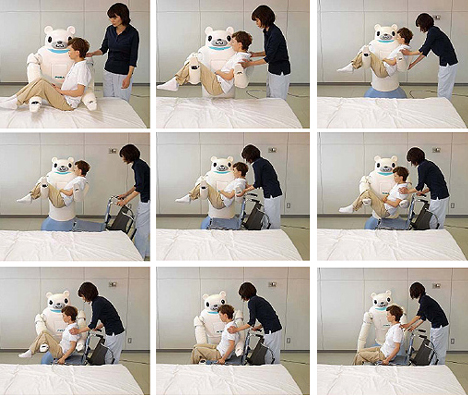
RIBA's creators say they chose the friendly teddy bear appearance to put patients at ease. Attempting to make the robot look human would only frighten people, they claimed in their press release.
RIKEN and TRI plan to put RIBA to work in hospitals within the next five years.
[Source: RIKEN (JP) // Added Sep 1: English press release]


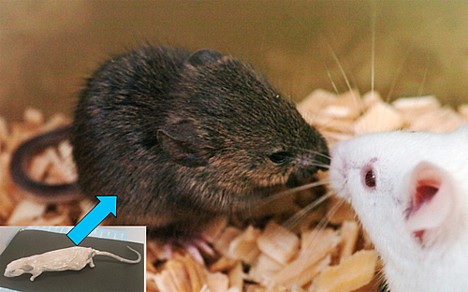
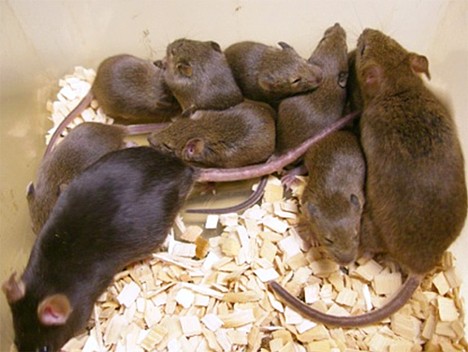

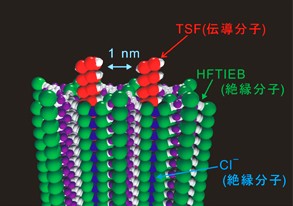 In a development that brings superdense memory devices and molecule-sized machines a step closer to reality, scientists at Japan's Institute of Physical and Chemical Research (
In a development that brings superdense memory devices and molecule-sized machines a step closer to reality, scientists at Japan's Institute of Physical and Chemical Research (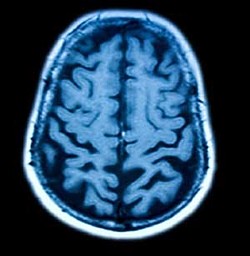 In an effort to accelerate the development of next-generation automobiles and robots, Toyota is turning to some of Japan's top neuroscientists. According to a December 14 announcement, the automaker has teamed up with the Institute of Physical and Chemical Research (
In an effort to accelerate the development of next-generation automobiles and robots, Toyota is turning to some of Japan's top neuroscientists. According to a December 14 announcement, the automaker has teamed up with the Institute of Physical and Chemical Research (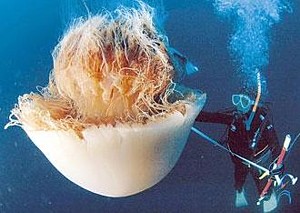 In the latest development in Japan's war against giant
In the latest development in Japan's war against giant 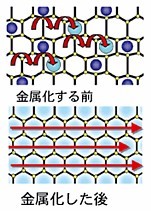
 On January 18, researchers from Japan's Institute of Physical and Chemical Research (
On January 18, researchers from Japan's Institute of Physical and Chemical Research (